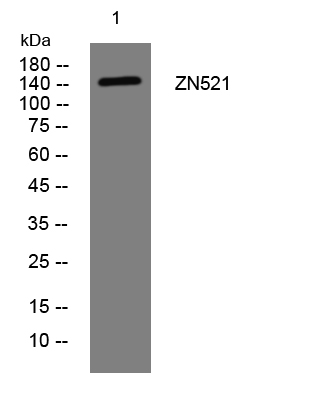- Home
- About
- Promotions
-
Products
-
Elisa Kits
- |
-
Primary antibodies
- |
-
Secondary antibodies
- |
-
Proteins
- |
-
IHC reagents
- |
-
WB reagents
- PonceauS Staining Solution
- PBST Washing Buffer, 10X
- 1.5M Tris-HCl Buffer, pH8.8
- 1M Tris-HCl Buffer, pH6.8
- 10% SDS Solution
- Prestained Protein Marker
- TBST Washing Buffer, 10X
- SDS PAGE Loading Buffer, 5X
- Stripping Buffered Solution
- Tris Buffer, pH7.4, 10X
- Total Protein Extraction Kit
- Running Buffer, 10X
- Transfer Buffer, 10X
- 30% Acr-Bis(29:1) Solution
- Tris电泳液速溶颗粒
- PBS(1X, premixed powder)
- TBS(1X, premixed powder)
- 快速封闭液
- 转膜液速溶颗粒
- Chemical reagents
- News
- Distributor
- Resources
- Contact
- Home
- >
- Info
- >
- ZN521 rabbit pAb
- >
- Go Back
ZN521 rabbit pAb
- Catalog No.:YT7130
- Applications:WB
- Reactivity:Human;Mouse
- Gene Name:
- ZNF521 EHZF LIP3
- Immunogen:
- Synthesized peptide derived from human ZN521 AA range: 997-1047
- Specificity:
- This antibody detects endogenous levels of ZN521 at Human/Mouse
- Formulation:
- Liquid in PBS containing 50% glycerol, 0.5% BSA and 0.02% sodium azide.
- Source:
- Polyclonal, Rabbit,IgG
- Purification:
- The antibody was affinity-purified from rabbit antiserum by affinity-chromatography using epitope-specific immunogen.
- Storage Stability:
- -15°C to -25°C/1 year(Do not lower than -25°C)
- Molecular Weight(Da):
- 144kD
- Function:
- disease:A chromosomal aberration involving ZNF521 is found in acute lymphoblastic leukemia. Translocation t(9;18)(p13;q11.2) with PAX5. The translocation generates the PAX5-ZNF521 oncogene consisting of the N-terminus part of PAX5 and the C-terminus part of ZNF521.,domain:Uses different DNA- and protein-binding zinc fingers to regulate the distinct BMP-Smad and hematopoietic system.,function:Transcription factor that can both act as an activator or a repressor depending on the context. Involved in BMP signaling and in the regulation of the immature compartment of the hematopoietic system. Associates with SMADs in response to BMP2 leading to activate transcription of BMP target genes. Acts as a transcriptional repressor via its interaction with EBF1, a transcription factor involved specification of B-cell lineage; this interaction preventing EBF1 to bind DNA and activate target genes.,sim
- Subcellular Location:
- Nucleus .
- Expression:
- Predominantly expressed in hematopoietic cells. Present in organs and tissues that contain stem and progenitor cells, myeloid and/or lymphoid: placenta, spleen, lymph nodes, thymus, bone marrow and fetal liver. Within the hematopoietic system, it is abundant in CD34(+) cells but undetectable in mature peripheral blood leukocytes, and its levels rapidly decrease during the differentiation of CD34(+) cells in response to hemopoietins.

- Western blot analysis of lysates from MDA-MB cells, primary antibody was diluted at 1:1000, 4°over night




